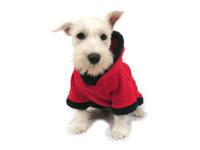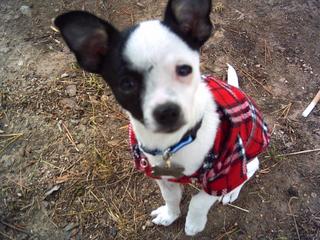Help could not come soon enough for the residents of New Orleans and the surrounding Gulf areas. But for devoted pet owners rescue came at a price…leave your dog behind. Having a plan in place before disaster strikes can save both you and your dog’s lives. Here’s what to do now.
General Helpful Hints
1 If you live in an apartment, consider putting an “animals inside” sign on your door. In case of fire, your pet’s chances of survival may increase if the firemen know.
2 Keep carrying cases, leads, etc. in an easily accessible location. If you must leave quickly, time spent looking for these items is time lost.
Know Your Neighbors
The help of a good neighbor can sometimes be your first line of defense.
1. Exchange your house or apartment key with a trusted neighbor. Exchanging keys with a neighbor offers the benefit of proximity. Should an unexpected crisis arise, your neighbor can reach your pets quickly. Friends or family may not know about the problem until it is too late.
2. Make a Plan. Discuss what to do in case of emergency. Do you have a cell phone? Make certain your neighbor has the number as well as any additional telephone numbers where you can be reached such as work or family. Write them on an index card in bold, large print, and laminate it.
3. Fido, Buffy, Max, Celia, Snorky… If you have more than one pet, make certain your neighbor has the following information:
a. The Number of Pets You Have. If they know how many pets they need to find, chances increase greatly all will be rescued.
b. What Type of Animals You Have. If Celia is a goldfish and your neighbor is looking for a dog, Celias’ chances of rescue drop. Make certain you are clear regarding the type of animal your neighbor should find.
c. Location of Pets In Your Home. This is important for caged animals such as birds, snakes, hamsters, etc. Do you keep your dog penned in the backyard? Let them know. The less time your neighbor spends searching for your pets, the more time they have to get them out quickly and safely.
d. Hi. My Name Is… If your neighbor can’t find your pet, they may respond if their names are called. Will they come when you whistle? Tell your neighbor. The more specific information they have, the better your pet’s chance of rescue.
On the Road Again
Before you leave for a vacation or an extended trip, talk with the person who will be caring for your pets. Make certain it is someone you trust such as a responsible family member, friend, or neighbor. If you use a pet sitting service, check their credentials before you leave. Ask for names of other clients who have used their services and call them to see if they were pleased. Better to know before you go rather than returning to an unpleasant surprise.
Discuss specifically what your sitter would do if a crisis arises and always leave contact numbers where you can be reached (hotel, cell phone, etc).
Points to consider:
1. If a problem occurs, will your sitter take your pets until you return? If not, give them the name and telephone number of a friend, family member, kennel or doggy spa they can contact to take your pets.
2. If an evacuation occurs, will your sitter take your pets?
3. In case of evacuation, give your sitter the telephone number of a family member or friend outside the effected area who can act as a contact. If you and your sitter cannot reach each other, you can each call the contact who can help relay information.
4. If one must leave the area, prearrange with family or friends within driving distance to take your pets. If you have more than one pet, ask in advance to make certain they can house all of them. If not, find others who can.
Name, Rank and Serial Number
Make certain your pets have proper identification. Include your last name and telephone number as well as the pet’s name on the ID tag. If you have one, consider using a cell phone number in case you and your pet are separated and you can’t go home.
Your Little Black Book
Begin collecting important telephone numbers and information now so you have them if you need them. To gather this information, conduct an Internet search for your area or contact animal associations such as the ASPCA or The Humane Society. Your list should also include your vet and a 24 hour animal hospital.
1. Pet Friendly Shelters: Many shelters may not accept pets in need of a temporary safe haven, but some do. Find the ones in your areas just in case.
2. Dog Friendly Lodging: Should you be displaced, know where to go. If you can’t reach friends or family, the names, addresses, and telephone numbers of hotels and motels which accept pets can be a life saver.
3. Animal Rescue Centers. Even the best laid plans go astray. If this happens, call your local animal shelter or vet and ask if they can provide assistance. If you have more than one pet, confirm that they will be able to take them all.
4. Here are a few starting points for more information.
American Society for the Prevention of Cruelty to Animals
American Veterinary Medical Foundation
American Humane Association
Petfinder.com
If You Must Evacuate
If the situation becomes so dire you must leave, consider the following. Generally, time is of the essence.
1. Leave as quickly as possible and take your pets with you! Don’t leave your pets behind thinking you can return and get them. Very often, you will not be permitted to return until the crisis is over.
2. If you are driving, load up the animals and hit the road. If you can’t take your pets where you are going, use your back up family member or friend plan first. Then your dog friendly lodging or rescue shelter options. If worse comes to worse, you may be able to find someone along the way who can help you.
If you cannot take your pet(s) to a safe place and you MUST evacuate, help improve your pet’s chances to stay alive. Make certain dogs are unchained or uncaged. Pets left alone will rely on their natural instincts to survive.
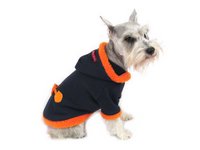 Good hygiene improves dog health and keeps your pooch looking stunning. Here are a few tips to keep him looking his best.
Good hygiene improves dog health and keeps your pooch looking stunning. Here are a few tips to keep him looking his best.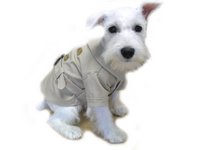
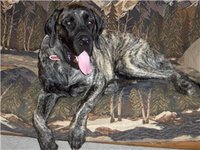
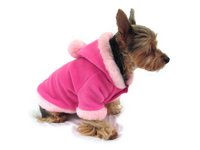 If only we humans could rest as much as our pampered, furry friends. On a whole, dogs tend to sleep up to thirteen hours a day, 24% of which is active REM sleep. But are they dreaming? We wish we knew! A dog's sleep schedule and amount will vary depending upon his activity level and the level of activity around him - with active dogs sleeping less than their more sedate brethren. Small dogs especially enjoy an area of their own where they can rest safe and secure out harms way. Here are a few tips to help make your dog's nap time even more enjoyable.
If only we humans could rest as much as our pampered, furry friends. On a whole, dogs tend to sleep up to thirteen hours a day, 24% of which is active REM sleep. But are they dreaming? We wish we knew! A dog's sleep schedule and amount will vary depending upon his activity level and the level of activity around him - with active dogs sleeping less than their more sedate brethren. Small dogs especially enjoy an area of their own where they can rest safe and secure out harms way. Here are a few tips to help make your dog's nap time even more enjoyable.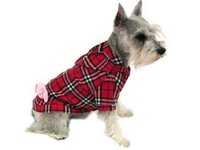
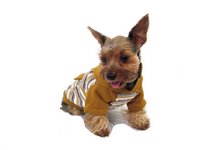

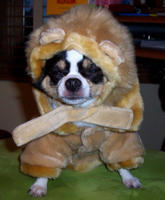 October is almost over and we wanted to share another pampered pup from our photo contest.
October is almost over and we wanted to share another pampered pup from our photo contest.